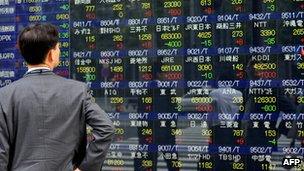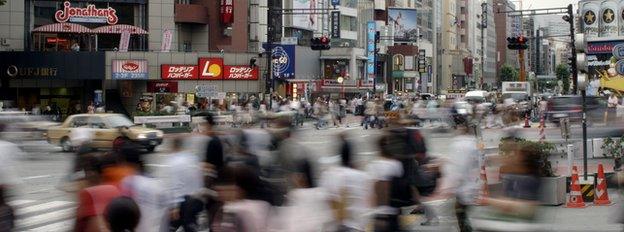Abenomics: The objectives and the risks
- Published

Japanese stocks have surged recently on hopes that Abenomics will revive growth
Shinzo Abe has a mission - that of reviving the Japanese economy, which has been stagnant for two decades.
And in his quest to do so Mr Abe, who won a return to office as Japan's prime minister in December, has launched one of the most aggressive policy moves in Japan's history.
Such has been the scale of his plan, that observers have even named it after him, calling it "Abenomics".
It is based on three key pillars - the "three arrows" of monetary policy, fiscal stimulus and structural reforms - to ensure long-term sustainable growth in the world's third-largest economy,
And with initial surveys indicating a big victory for the ruling coalition - led by his party - in the weekend's upper house elections, he is expected to be able to push his plans with even more assertiveness.
While the markets, investors and Japanese exporters have cheered his moves so far, some have warned of the risks and threats posed by them in the long run.

Getting consumers and businesses to spend more is key to the success of Abenomics

Mr Abe plans to boost infrastructure spending to spur a fresh wave of economic growth

Mr Abe has said that he wants to introduce reforms in key sectors such as agriculture
- Published19 June 2013
- Published25 April 2013